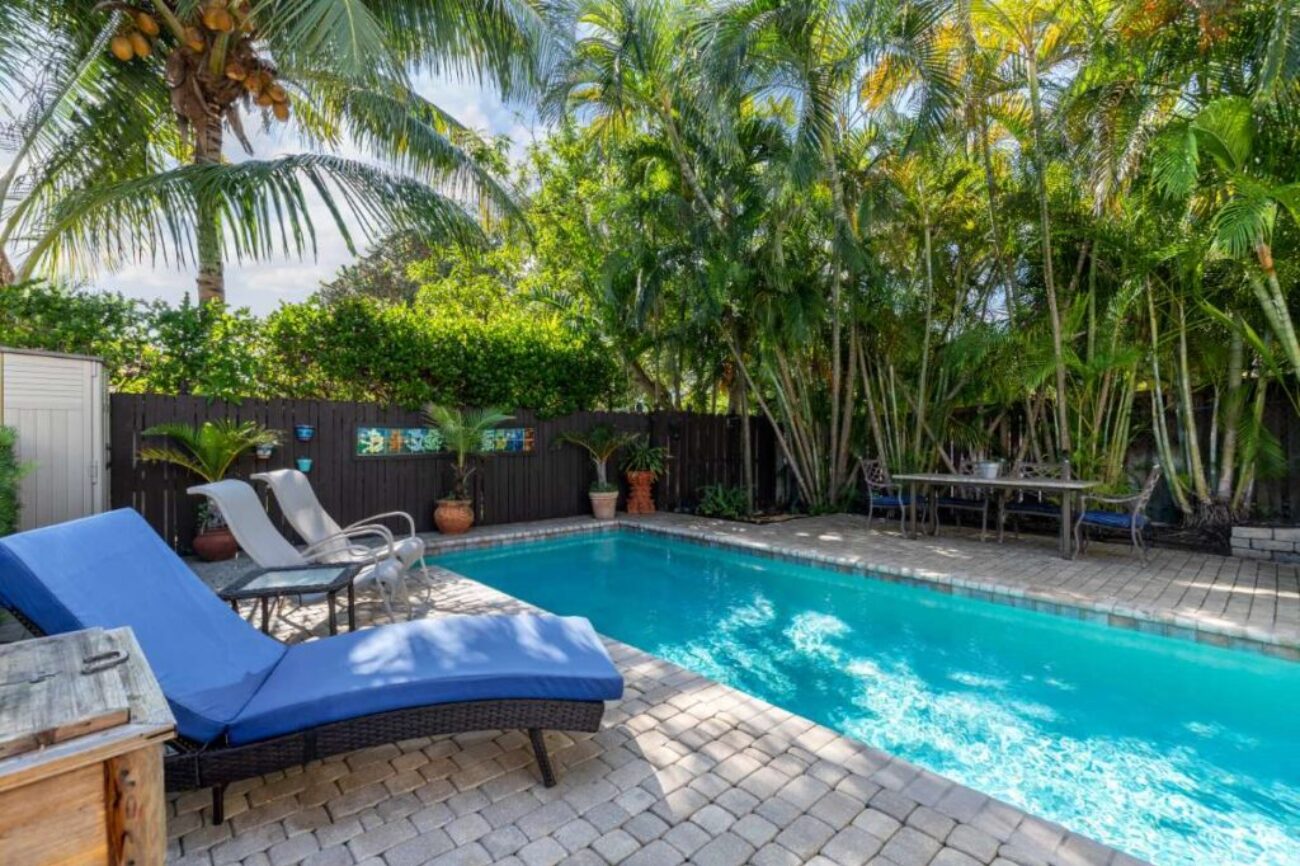How Seasonal Pricing Can Boost Your Pool Route Profits
In the competitive landscape of the pool maintenance industry, seasonal pricing strategies can significantly enhance profitability. This blog post explores how dynamic pricing can be leveraged to increase revenue, attract new clients, and maximize profits throughout the year.
How Seasonal Pricing Can Boost Your Pool Route Profits
In the pool maintenance industry, understanding the nuances of seasonal demand can help businesses not only survive but thrive. Seasonal pricing is a strategy that allows pool service providers to adjust their prices based on demand fluctuations throughout the year. By implementing effective seasonal pricing strategies, pool route owners can capitalize on high-demand periods while remaining competitive during slow seasons. In this blog post, we will delve into the benefits of seasonal pricing, successful implementation strategies, and the importance of understanding your market.
Introduction
As temperatures rise in the summer months, pool owners often find themselves in need of reliable maintenance services more than ever. Conversely, during the winter months, many pool owners may neglect their swimming pools, leading to decreased demand for services. This cyclical nature of the pool service business creates opportunities for entrepreneurs to optimize their pricing strategies to boost profits. In this article, we will explore how the concept of seasonal pricing can be applied to your pool route business, assess its benefits, and provide actionable insights on implementing this strategy effectively.
Understanding Seasonal Demand in the Pool Service Industry
To effectively implement seasonal pricing, it’s crucial to understand the patterns of consumer demand within the pool service industry. The peak season for pool services typically aligns with warmer months, especially in regions like Florida and Texas, where temperatures can soar significantly. According to industry analysts, the demand for pool cleaning, maintenance, and repair services tends to increase sharply from late spring through early fall. During this time, pool owners are more likely to seek out regular maintenance or emergency repairs, which translates to higher revenue potential for service providers.
Statistics show that pool service businesses can see a revenue increase of up to 30% during peak months compared to off-peak periods. In contrast, winter months often result in a slowdown in service requests, prompting many pool route owners to reconsider their pricing strategies to maintain revenue flow. Implementing seasonal pricing can help mitigate this seasonal drop-off in income. By adjusting prices to reflect demand, pool service providers can maximize profitability during peak seasons and encourage service uptake during slower months.
For example, a pool service company might increase its rates in June and July when demand is at its peak, while offering promotional discounts in the off-peak months to attract new customers or retain existing ones. By strategically adjusting pricing, businesses can enhance their competitive edge and ensure a steady stream of income throughout the year.
Implementing Seasonal Pricing Strategies
Implementing effective seasonal pricing strategies requires careful planning and consideration. Here are some steps to create an effective seasonal pricing model for your pool route business:
- Analyze Historical Data: Start by reviewing your business’s historical performance data. Identify peak seasons and off-peak periods based on your past service requests. Look for trends in customer behavior, such as the months when clients are most likely to request services or upgrades.
- Segment Your Services: Not all services warrant the same pricing strategy. For example, routine maintenance may have a different pricing structure compared to emergency repairs or one-time cleanings. Segment your service offerings and establish pricing tiers that reflect demand.
- Create Packages: Consider offering service packages that combine multiple offerings at a discounted rate during off-peak times. This not only provides value to customers but also encourages them to book services they may not have otherwise. For instance, a comprehensive pool maintenance package that includes cleaning, chemical balancing, and equipment checks at a reduced rate can be attractive during slower months.
- Promote Seasonal Specials: Be proactive in marketing your seasonal promotions. Use your website, social media platforms, and email newsletters to communicate discounts and special offers. This can help stimulate demand during slower periods and keep your business top of mind for customers.
- Monitor Competitor Pricing: Keep an eye on competitor pricing strategies to ensure your rates remain competitive. Adjust your pricing as needed while maintaining profitability. Understanding your competitors’ seasonal pricing models can provide insights into what works best in your market.
- Gather Customer Feedback: Directly engage with your customers to understand their needs and how they react to your pricing. Gather feedback on your services and pricing through surveys or direct conversations. This can help refine your pricing strategy and improve customer satisfaction.
By implementing these strategies, pool route owners can ensure they are making the most of their pricing during peak demand periods and optimizing their revenue throughout the year.
The Benefits of Seasonal Pricing for Pool Route Owners
Seasonal pricing offers numerous benefits for pool route owners looking to optimize their profits. Here are some of the most significant advantages:
- Increased Revenue Potential: By adjusting prices according to seasonal demand, pool service providers can tap into higher revenue opportunities during peak months. For example, premium rates during summer can significantly increase your overall income, allowing you to capitalize on the influx of new clients seeking services.
- Customer Attraction and Retention: Offering seasonal promotions can help attract new customers who may be hesitant to commit to regular maintenance. Discounts during the off-peak season can encourage existing customers to schedule services they might otherwise put off, ensuring you maintain a steady client base.
- Competitive Advantage: Seasonal pricing can set your business apart from competitors. While others may stick to fixed pricing, your ability to adapt to market conditions and customer needs can enhance your reputation as a responsive and customer-oriented service provider.
- Stabilized Cash Flow: By effectively leveraging seasonal pricing, pool route owners can create a more stable cash flow throughout the year. This financial consistency enables better planning for operational costs, employee salaries, and business growth initiatives.
- Enhanced Budgeting and Planning: With predictable revenue patterns established through seasonal pricing, business owners can better budget for expenses and invest in growth opportunities. This can include expanding service areas, hiring additional staff, or upgrading equipment.
- Increased Customer Engagement: Seasonal promotions provide opportunities for increased communication with your clients. By keeping them informed about your offerings and pricing, you can foster loyalty and encourage them to share their positive experiences with others.
Implementing seasonal pricing effectively can create a win-win situation for both pool service providers and customers alike, with increased satisfaction and profitability on both sides.
Understanding Your Market: The Key to Successful Seasonal Pricing
To successfully implement seasonal pricing strategies, it’s essential to have a deep understanding of your target market. The pool maintenance industry is influenced by various factors, including geographic location, climate, and customer demographics.
For instance, in warmer states like Florida, pool maintenance services are typically in high demand year-round due to the favorable climate. Conversely, in states with colder winters, such as Texas, pool service businesses may experience slower months during the winter. Recognizing these regional differences is crucial for effectively tailoring your pricing strategies.
Additionally, understanding your customer demographics can help refine your pricing strategies. Are your clients primarily homeowners looking for routine maintenance, or are they property managers managing multiple rental properties? Each segment may respond differently to pricing changes and promotions.
Moreover, conducting market research and competitor analysis can provide valuable insights into pricing trends and customer perceptions. For example, if most competitors in your area offer consistent pricing, leveraging seasonal pricing could give you a competitive edge. Alternatively, if competitors already have aggressive seasonal promotions, you may need to adjust your strategy to remain attractive to clients.
By gaining a thorough understanding of your market, you can make informed decisions about your pricing strategies and ensure they align with customer preferences and expectations.
Best Practices for Implementing Seasonal Pricing
To effectively implement seasonal pricing in your pool route business, consider the following best practices:
- Communicate Clearly: Ensure that customers are aware of your seasonal pricing structure. Transparency about pricing changes helps build trust and reduces potential confusion.
- Use Data Analytics: Utilize data analytics tools to track customer behavior and service requests. This data can support strategic pricing decisions and improve your overall operational efficiency.
- Adjust Regularly: Regularly revisit and adjust your pricing strategies based on market trends and customer feedback. The needs of your business may change, and flexibility is essential to staying competitive.
- Evaluate Performance: After implementing seasonal pricing strategies, evaluate their effectiveness and impact on your overall profitability. This will help you understand what works and what may need to be adjusted in the future.
- Stay Customer-Centric: Always keep the customer experience in mind when implementing pricing changes. Your focus should be on delivering value and ensuring satisfaction, which can lead to repeat business and referrals.
- Incorporate Technology: Consider investing in software that can automate pricing strategies based on predefined criteria. This can streamline your operations and reduce the risk of manual errors.
By adhering to these best practices, pool route owners can successfully implement seasonal pricing strategies that lead to enhanced profitability and sustainable growth.
Conclusion
In summary, seasonal pricing is a powerful strategy that can significantly boost profits for pool route owners. By understanding seasonal demand, implementing effective pricing strategies, and continuously evaluating market conditions, pool service providers can optimize their revenue throughout the year. The insights shared in this blog post provide a framework for leveraging seasonal pricing to enhance your business’s profitability and growth potential.
As you consider the implementation of seasonal pricing in your pool route business, remember that flexibility, clear communication, and a focus on customer satisfaction are key to success. Start exploring seasonal pricing strategies today and watch your pool route profits soar.
For more insights and assistance in optimizing your pool service business, feel free to reach out to Tower Business Brokers for expert guidance and access to lucrative pool routes for sale.



